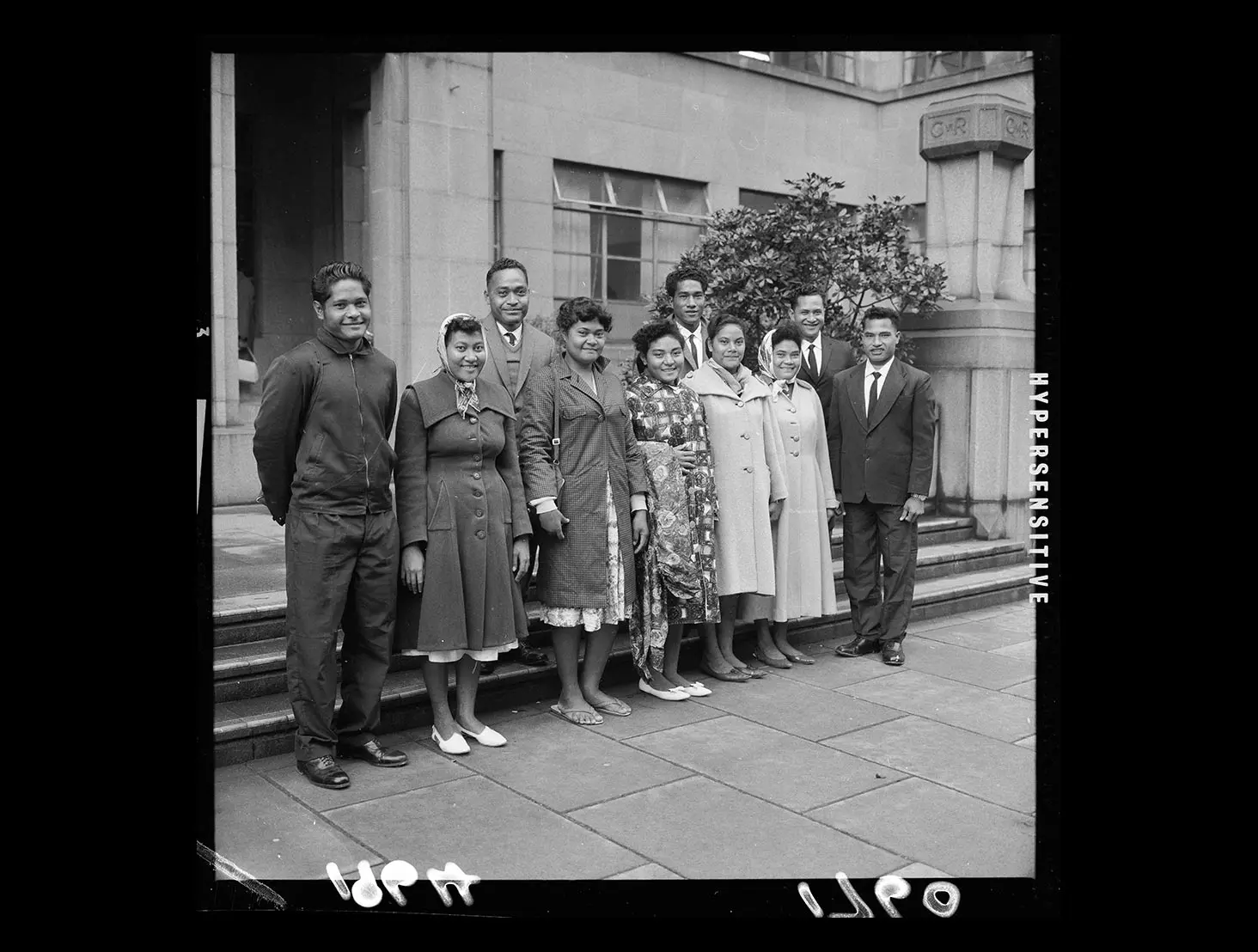Read a story about Tokelauans making a life in Aotearoa
This photograph of a newly arrived group of Tokelauans in Wellington accompanied an article printed in the Evening Post on 26 May 1964. The group had just been shopping for the clothing they are wearing, the first warm clothes they had ever needed to own. New Zealand’s cold weather and infrastructure and technology were major changes for the group. As the paper wrote, ‘They come from a tiny dot in the Pacific … hav[ing] never seen a bicycle, let alone a motor-car.’
This group of 10 migrants was the second to arrive in New Zealand as a part of a government-assisted scheme for unmarried people. The scheme offered Tokelauans a chance to start a new life with many more opportunities than they had back home.
Susana Lemisio (née Perez; pictured second left) was only 18 when she arrived in New Zealand. She married and settled in Wellington, and bought a home in Petone with her husband, Teofilo, in 1974. Although leaving home can potentially mean losing one’s national identity, she was determined to ensure that the Tokelauan language and culture were passed on to future generations.
Susana is now a well-known figure in the Tokelau community, dedicating many years of her life to empowering the people and strengthening the use of their language. In 2016, she was made a Member of the New Zealand Order of Merit in recognition of her services to New Zealand’s ‘Tokelau community and early childhood education’. One of her achievements was starting Akoga Kamata, the first Tokelauan-language nest and playgroup for Tokelauan children in Petone, in the 1980s.
New Zealand started administering Tokelau in 1925, when it was a British territory known as the Union Islands. In 1948, it was officially made part of New Zealand, and its name was changed to Tokelau Islands in 1976. Tokelau is made up of three coral atolls — Fakaofo, Nukunonu and Atafu — whose combined liveable land area is the size of a small New Zealand town. By the 1960s, overpopulation was becoming an issue, so the New Zealand government put its resettlement scheme in place.
Fifty years on from that early, chilly shopping trip, Wellington continues to hold warm appeal for the people of Tokelau. The Tokelauan population in New Zealand (more than 8600 people in the 2018 census) now far exceeds the numbers living in Tokelau itself (around 1600 in the 2019 Tokelauan census), with most of the population resident in the Wellington region.
Story written by: Suliana Vea
Copyright: Turnbull Endowment Trust
Find out more
Read a connected story from Te Kupenga: Mean money.
Explore the Alexander Turnbull Library collections further: Tokelau.
Topic Explorer has:
Want to share, print or reuse one of our images? Read the guidelines for reusing Alexander Turnbull Library images.
Curriculum links
